In key hurdle for clean energy experiment, fusion reactor’s mild “magnetic butterfly” is shown to influence the twist of a mighty tornado
On December 21st LPP’s research team used a simple coil of wire to create a ten-fold increase in x-rays emitted from a billion-degree plasma at the center of a magnetic vortex. This first unambiguous demonstration of the Axial Field Coil (AFC) shows that small magnetic fields—just a few times greater than those that sway a compass needle—can magnify the x-ray and fusion energy output of FF-1, LPP’s fusion energy research device.
The AFC’s electric current of four amperes generated a magnetic field that, despite being relatively weak, was still able to manipulate FF-1’s main electric current pulse of over a million amps. “This is like using a butterfly’s wings to redirect a tornado,” explains LPP’s Chief Scientist, Eric Lerner.
The “butterfly effect” has become synonymous with the behavior of highly unstable, chaotic systems like the earth’s weather. In such systems, tiny inputs can be magnified by instabilities over time until they become huge effects. This idea was memorably encapsulated in the title given by meteorologist Philip Merilees to a 1972 scientific presentation by Edward Lorenz: Does the flap of a butterfly’s wings in Brazil set off a tornado in Texas? It means that there are limits on the exact predictability of such chaotic systems.
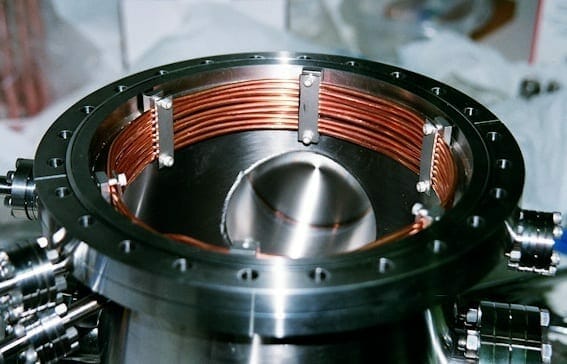
The Axial Field Coil inside FF-1’s 10-inch diameter vacuum chamber is a single insulated wire, invisible here because it is protected by a ¼ inch diameter coil of copper. It produces a magnetic field along the vertical axis of the device.
But how can one reliably control a tornado with a butterfly? First, you need a system that magnifies the effect of the butterfly’s wings. In FF-1, the magnetic coil—our butterfly—wrapped around the inside of the vacuum chamber, produces a small vertical magnetic field. This magnetic field pushes the main current of the device, moving inwards from the outer electrode, very slightly to the side – perpendicularly, creating a slight circular motion of the current. This circular motion of the mighty main electric current in the same direction as the coil’s current increases the vertical magnetic field. This stronger field then pushes the current ever more strongly to the side, leading to exponential growth of the vertical field and the circular current. This is the magnifying instability process, similar to the way a tiny swirl in the still water of a sink produces a fast-spinning vortex when the plug is pulled. It is also closely related to the non-magnetic process by which meteorological tornadoes form.

The latest results from the Axial Field Coil (AFC) show that its small initial input of spin can have a powerful impact. Here (l-r), the AFC is shown in a diagram from LPP’s 2009 US patent; undergoing maintenance within the detached vacuum chamber by LPP’s Aaron Blake; and assembled together with FoFu-1’s main electrodes.
To control the process, however, you need to get rid of all but one of the butterflies in the system. This is not practical for weather control, but is possible in a small vacuum chamber. LPP researchers have been working hard since August to reduce “accidental butterflies” by carefully eliminating any sources of random asymmetry that could set in motion unwanted circular currents. For example, FF-1’s electrodes are now centered on their shared axis to an accuracy of a thousandth of an inch.
The aim of all this effort is to add more spin—angular momentum—to the magnetic vortex that compresses the gas down to form the tiny plasmoid, the dense ball of plasma (electrically conducting gas) that heats up to produce fusion reactions. (Click for animation). This idea was first proposed in 2005 by LPP research team member Aaron Blake, and is protected by LPP’s patents in the US and Australia. With more spin, the plasmoid can grow bigger, engulfing more plasma and thus producing more reactions. However, too much spin will prevent full compression, so the amount of spin added has to be carefully controlled.
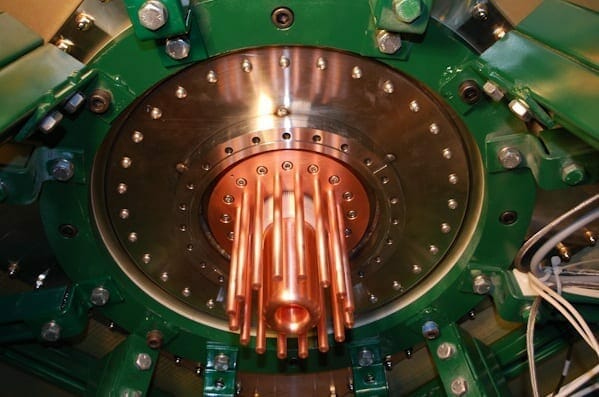
The copper electrodes mounted onto the FoFu-1 before the vacuum chamber is added (See these electrodes morph into how they would look as part of a future fusion generator here.) The outer rods are the cathodes and the thick inner anode is in the center. These are the “main electrodes” where main electric currents converge toward the hole in the anode.
The December 21st result dramatically shows this control. As the team varied the current in the AFC between zero (turned off) and 4.5 amps, the high-energy x-rays produced by the plasmoid changed by over a factor of ten, peaking when the AFC was at a current of 4.0 amps. The x-rays were measured with a Near Time-of-Flight instrument, referred to as NTF, which was shielded by 6 mm thick copper filter. This filter allowed only highly energetic, penetrating x-rays that were generated by electrons hotter than 100 keV (kiloelectron-Volts, equivalent to 1.1 billion degrees C) to pass through to the NTF, and absorbed less energetic ones.
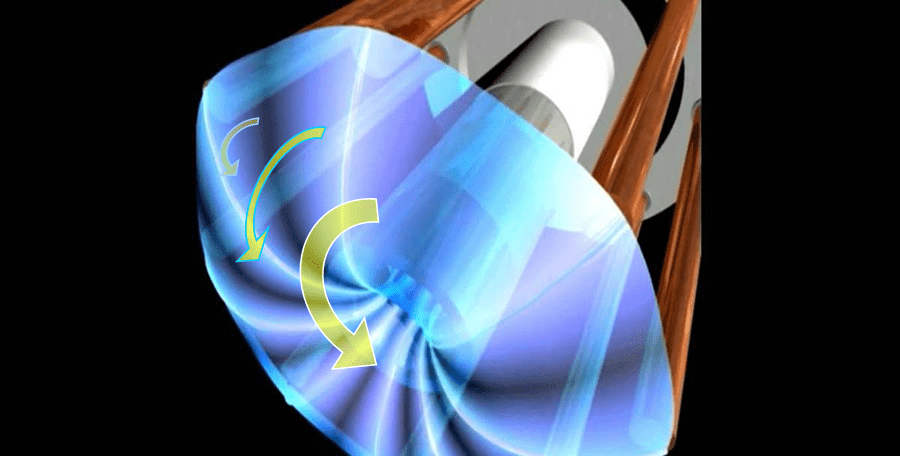
As the main current (white) in FF-1 flows inward to the central electrode (anode), the magnetic field generated by the AFC (not shown here) pushes the current in a circular direction (yellow arrows), creating a stronger field and more push, allowing a tiny current to control a huge one.
The data shows that for the narrow range of AFC from 3.5-4 amps, the plasma is being heated much hotter than for other settings. Most significantly, the difference in x-ray yield between the average of the shots at 4 amps and those at zero amps is 15 times greater than the random variation of yield between the two shots at 4 amps. This allows great confidence that the effect observed is real, even though only two shots were taken at each setting in this particular series of tests.
Fusion reactions were also enhanced by the AFC (Figure 4), although by a factor of 2, not 10. The difference in fusion yield between the 4-amp and zero-amp settings is still four times as much as the variation in yield between the two shots at 4 amps, indicating a significant effect. The greater enhancement of x-rays from the electrons shows that the electrons were both hotter and the plasmoid was larger, while the fusion reactions were only increased by the size of the plasmoid, as predicted by LPP’s theory.
The ability to control the spin of FoFu-1’s magnetic tornado will be crucial in future experiments, when the density of the gas is increased to generate far higher fusion yields, and more spin is required for the denser, slower-moving plasma. LPP’s team then expects to see even more dramatic results from our magnetic butterfly.
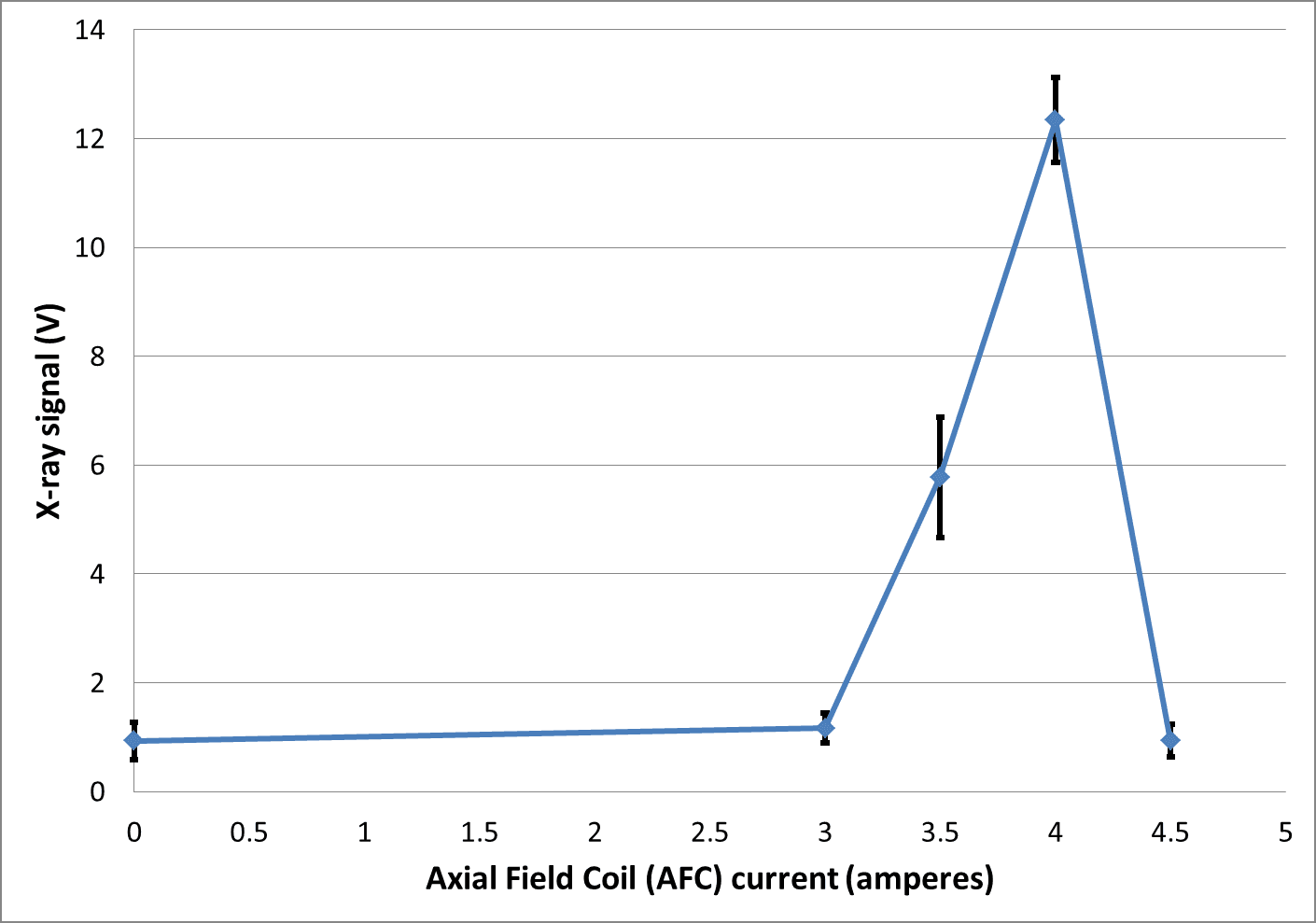
X-ray output peaks ten-fold in a narrow range of AFC current, showing the coil’s effectiveness (with error bars).
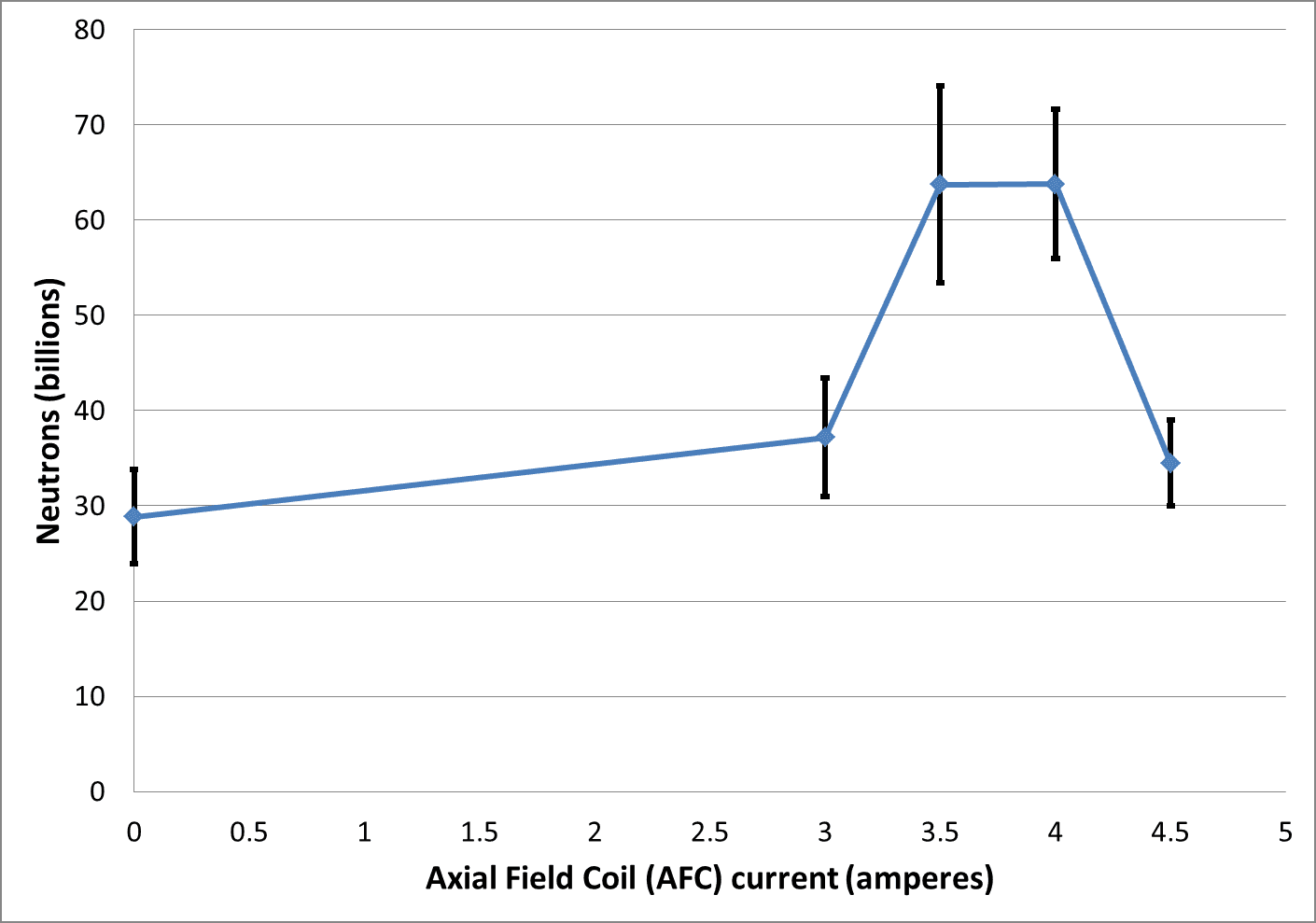
Fusion yield doubles in the same narrow range of AFC current, 3.5-4 amperes.
